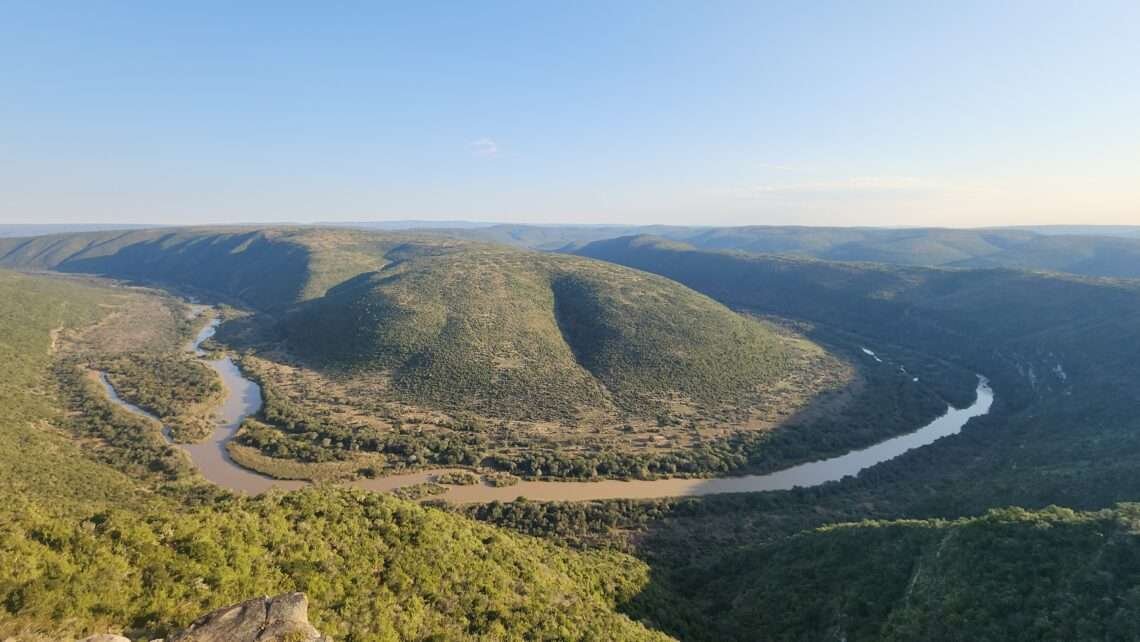
Double Drift Nature Reserve: Hiking & Hippos
Double Drift Nature Reserve is a hidden gem in the Eastern Cape Province of South Africa, only 30km away from the town of Alice. Forming part of the Great Fish River Reserve, Double Drift owes its name to a small island that effectively splits the Great Fish River into two channels, resulting in the formation of two drifts.
Beyond the Big Five: Unveiling the Wonders of Double Drift
All too often, the pull of the ‘Big Five’ animals (lion, leopard, buffalo, rhino and elephant) at larger reserves such as Addo Elephant Park or Kruger National Park tends to overshadow the smaller wildlife areas in South Africa. While these popular reserves do offer fantastic wildlife experiences, it’s unfortunate that places like Double Drift often go unnoticed. The allure of Double Drift lies in its tranquil setting, unspoiled by tourist crowds. Furthermore, the natural state of both the animal and plant species allows visitors to truly appreciate and enjoy their viewing experiences.
Not only is the diverse habitat and spectacular views of the reserve enticing to visitors, its rich history is just as impressive. Several forts bear witness to the frontier conflicts between the Xhosa and the British Settlers. Ancient rock art sites further contribute to the captivating allure of Double Drift. These remarkable rock paintings, discovered within caves and rock shelters, unveil the artistic expressions of the San people, or Bushmen, who inhabited the region centuries ago. Alongside this rich history, Double Drift offers excellent wildlife sightings, including Buffalo, Rhino, Kudu, and Hippo, providing a truly immersive experience.
All of the above is complimented with the dedicated staff at Double Drift going above and beyond to enhance the visitor experience. I was genuinely amazed by their efforts and the evident pride they took in ensuring we had a magnificent day at Double Drift.
From Double Drift to Mvubu Lodge
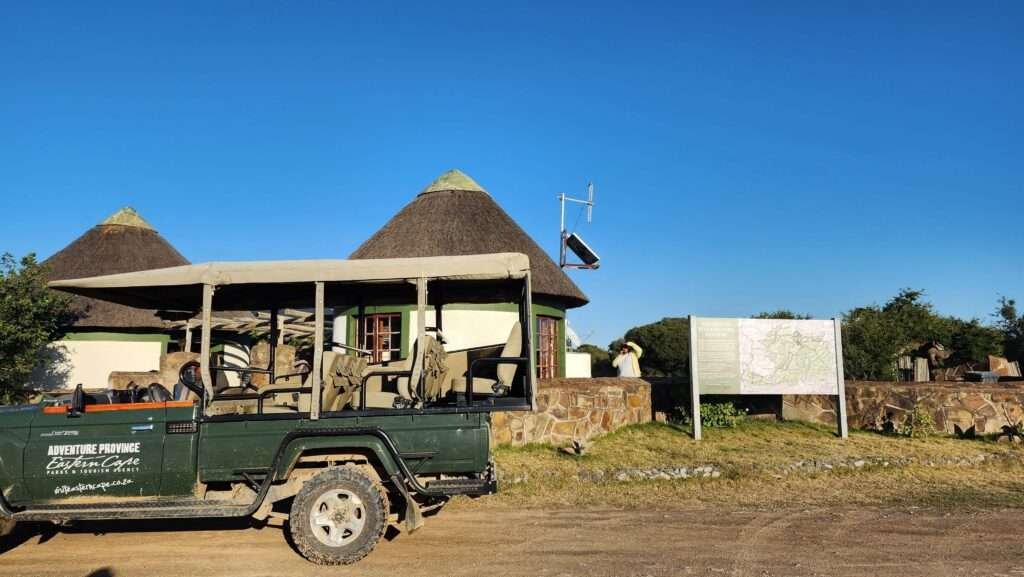
Upon leaving the town of Alice and taking the turnoff, a gravel road stretches for approximately 10 kilometers, leading to the main Double Drift office. The road is quite rough, but you don’t need a 4×4 vehicle if you drive slowly and carefully. As we reached our destination and parked our cars, we were warmly welcomed by the staff with enthusiastic smiles. We excitedly boarded the open game vehicles following a detailed briefing from our guide about the day’s itinerary and hiking route. The real treat awaited us as we embarked on a 15-minute drive to Mvubu Lodge, where our hiking trail would start. During the drive to Mvubu, keep your eyes peeled and your camera ready for the chance to capture some of the reserve’s wildlife.
When planning a visit to Double Drift during the winter months (May to August), it is crucial to dress warmly, especially if you’ll be riding on the back of the open Land Cruiser. The temperature can drop significantly, and the breeze can be chilly so don’t forget to bring extra layers, jackets, and perhaps even a cozy blanket to keep yourself snug during the ride.
Important to note: Restroom facilities are conveniently accessible both near the front office and at Mvubu Lodge.
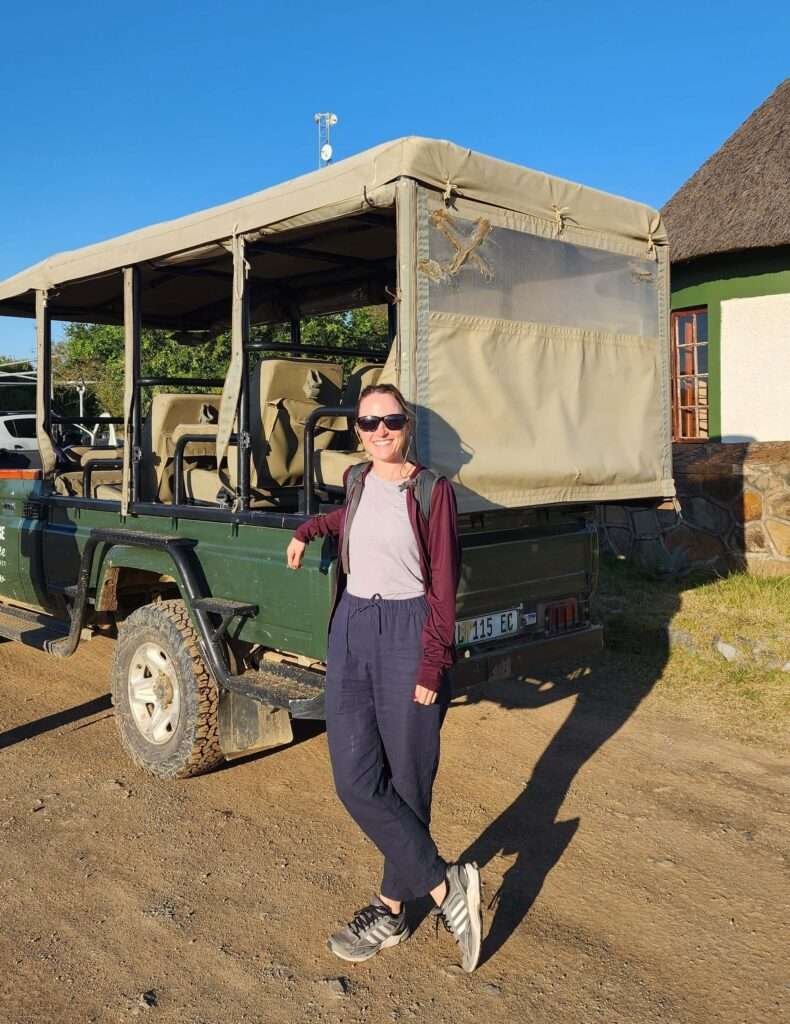
A pleasant welcome at Mvubu Lodge
Upon reaching Mvubu Lodge, we were delighted by a heartwarming surprise. The staff greeted us and presented each of us with a thoughtfully prepared ‘snack pack.’ The packs contained a variety of treats, including chips, an energy bar, apple, banana, peanuts, and refreshing water.
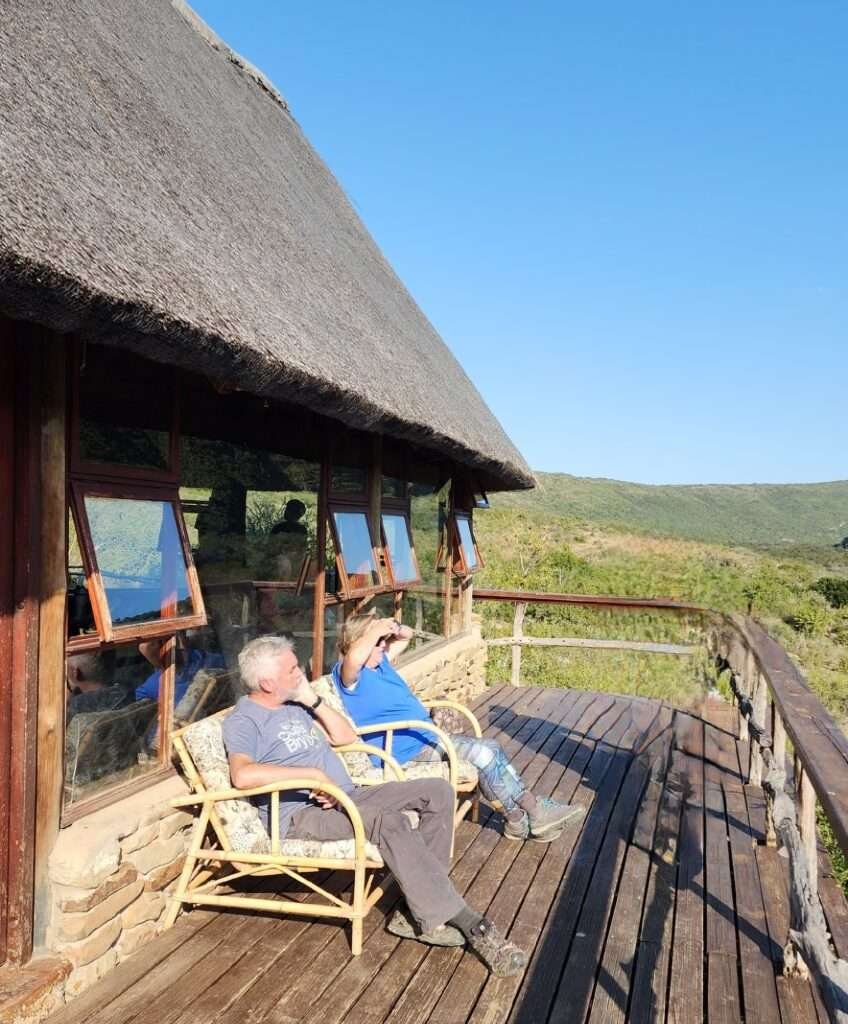
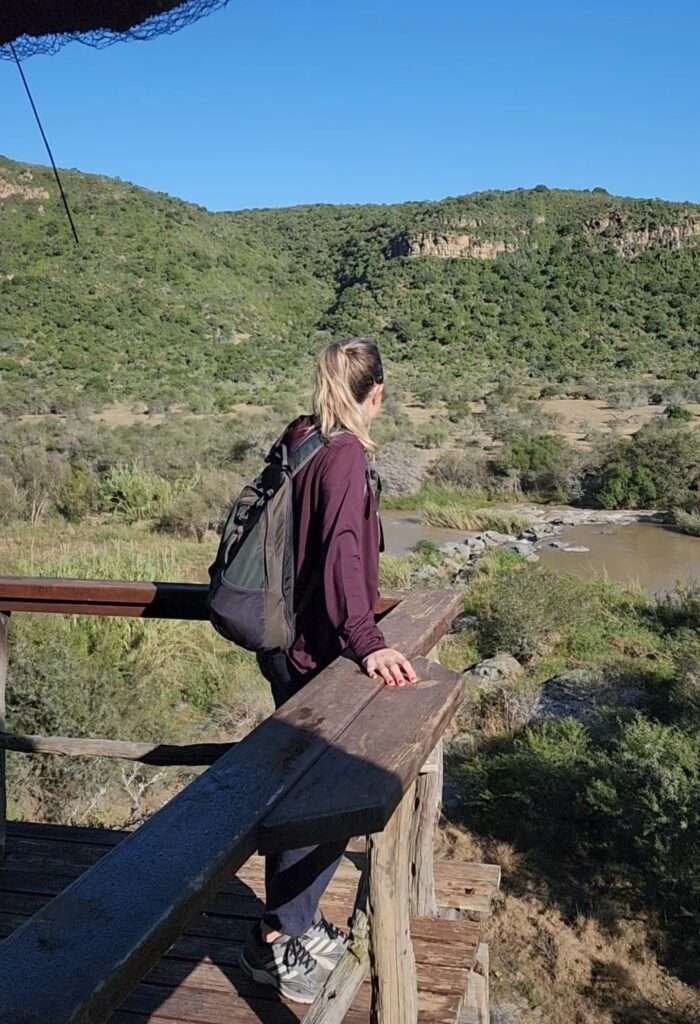
An adventurous journey at Double Drift
We set off on our 8km guided walk, brimming with anticipation of the animals we might encounter along our path. Since there is dangerous wildlife such as rhino in the region, our group was accompanied by two armed staff members. One member took the lead position, guiding us from the front, while the other remained at the rear for added security.

While the thrill of observing rhinos and buffaloes up close is undeniably exciting, the magic of Double Drift lies in the almost secrecy of the animals that live there. Clues like dung and tree bark scratches serve as tangible evidence of the presence of rhinos and buffaloes. However, the thick, sub-tropical thicket poses a challenge to spotting these animals. In fact, as you tread along, there is a high likelihood that a vigilant rhino or buffalo is stealthily observing your every move.
A memorable hippo encounter
Our guide came to a sudden halt, signaling us to silence. Hearing hippo sounds, he enthusiastically went into the bush to investigate, while we all waited nervously on the side.
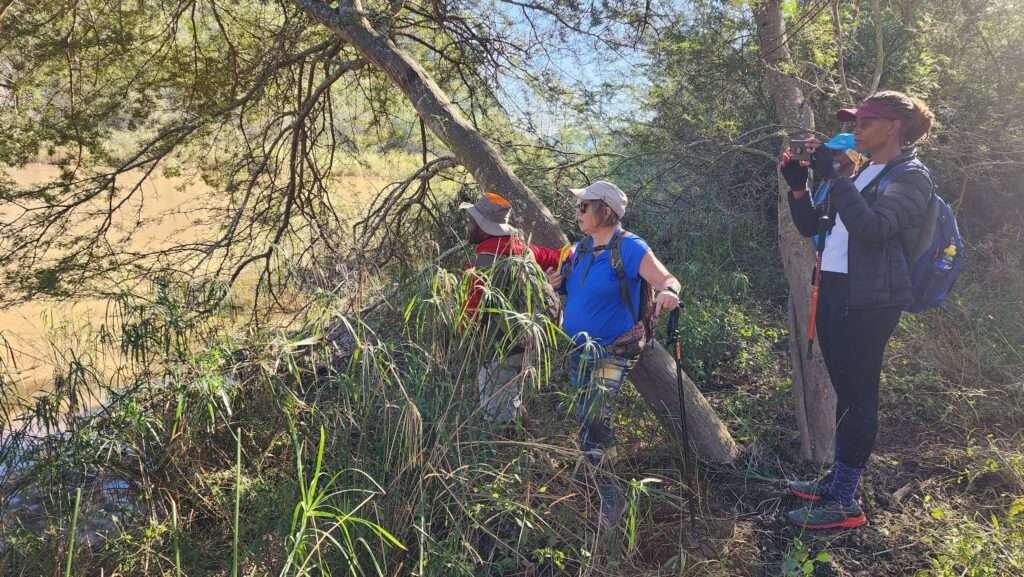
After approximately five minutes of the guide inspecting and ensuring our safety, the guide motioned for us to approach the water’s edge. To our pure joy, we were greeted by the sight of not just one, but two magnificent hippos basking in the tranquil waters. The closeness of the hippos was an incredible feeling, with merely a few meters separating us from the giant animals.
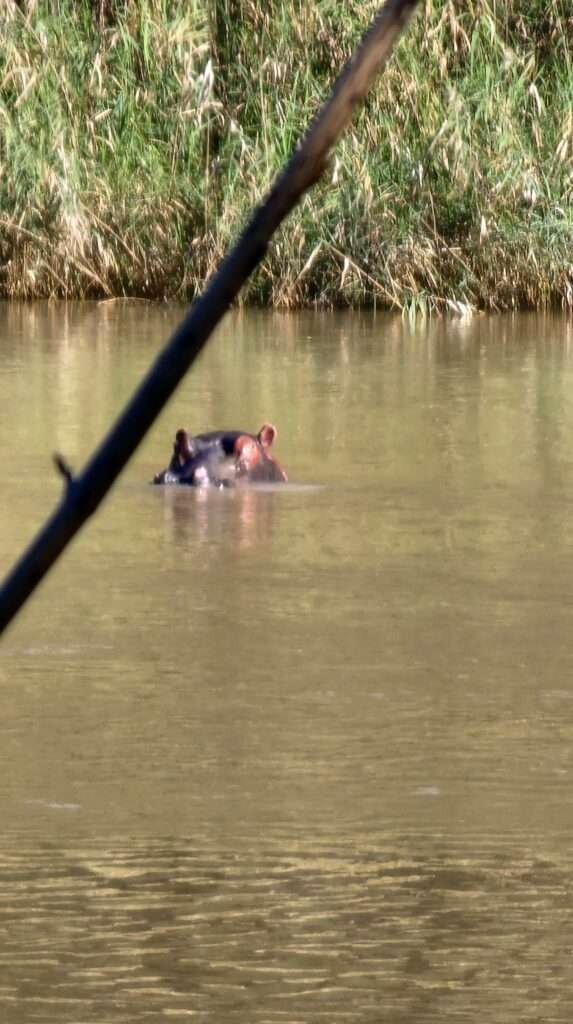
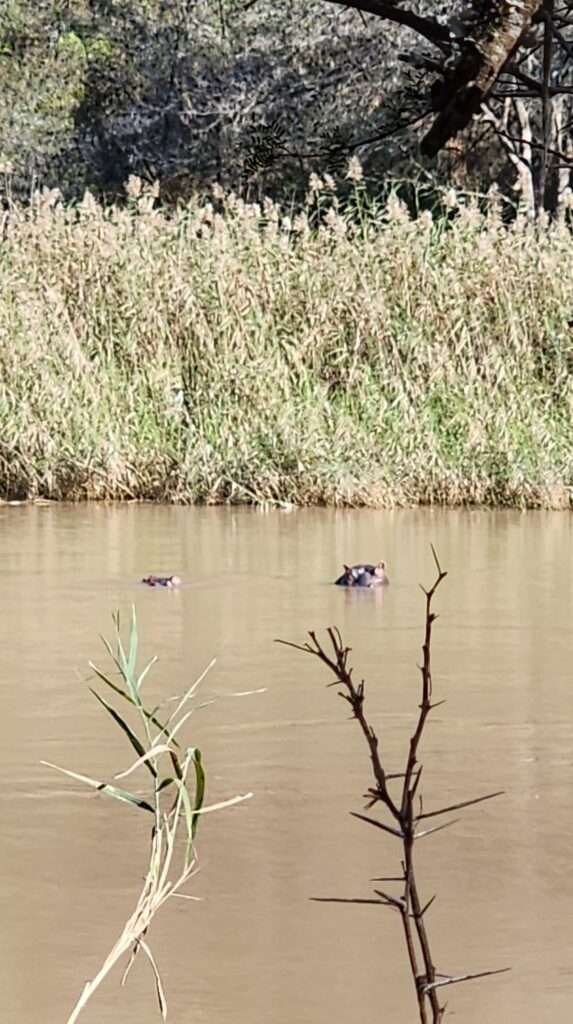
The powerful Great Fish River
After about 4km of hiking, we left the thicket and passed through a rocky river bed.
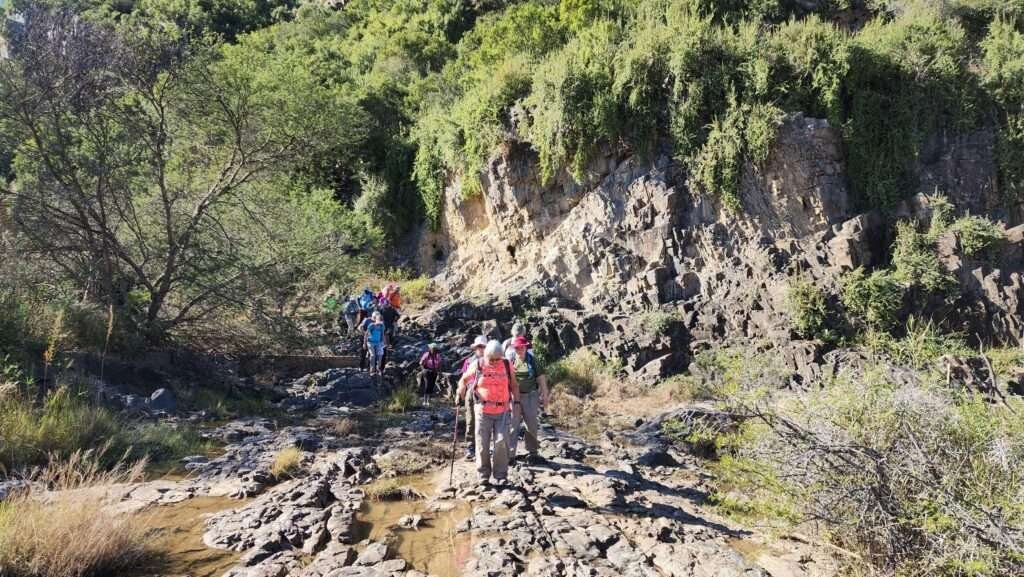
At last, we reached a well-deserved break during our hike, providing us with a chance to rest and enjoy our snack packs. Our resting spot offered a breathtaking view of the magnificent Great Fish River. It roared with impressive force, flowing vigorously beside our resting place. The river spans an impressive distance of 30km, gracefully cutting through the heart of the reserve, effectively dividing it in two. Its historical significance was not to be overlooked either, as it once served as a border between the Cape Colony and the Xhosa people, bearing witness to numerous battles during the frontier wars.
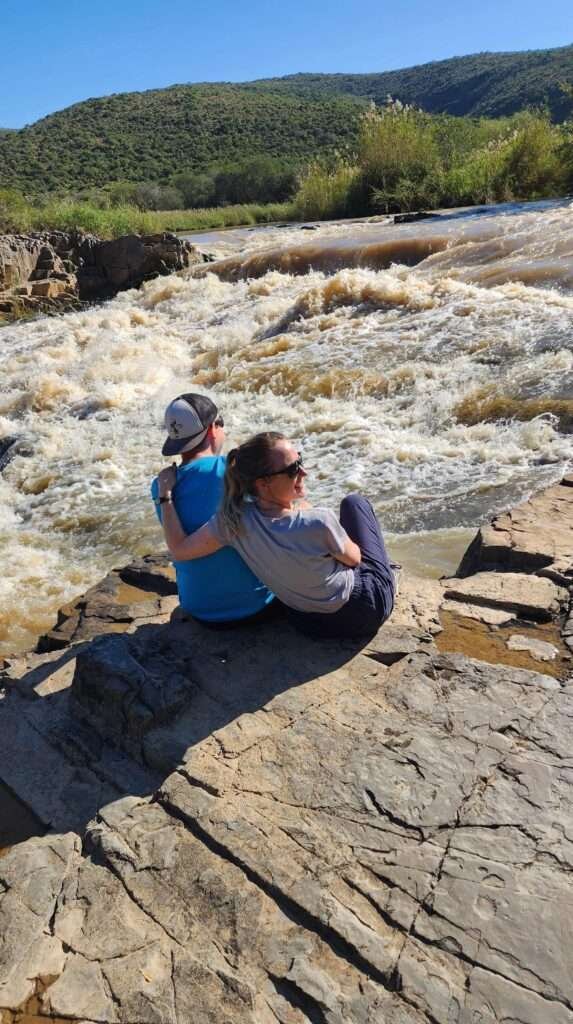
Scaling the cliff and admiring San Art Rock
Those who desired an extra dose of adventure had the option to scramble up a steep rock cliff and view some San Art Rock. Navigating the challenging terrain of the steep embankment demands both bravery and nimbleness. Slippery surfaces and potential slides are common along the way. If you have a fear of heights, it might be wise to skip this particular venture and explore more of the riverbed below.

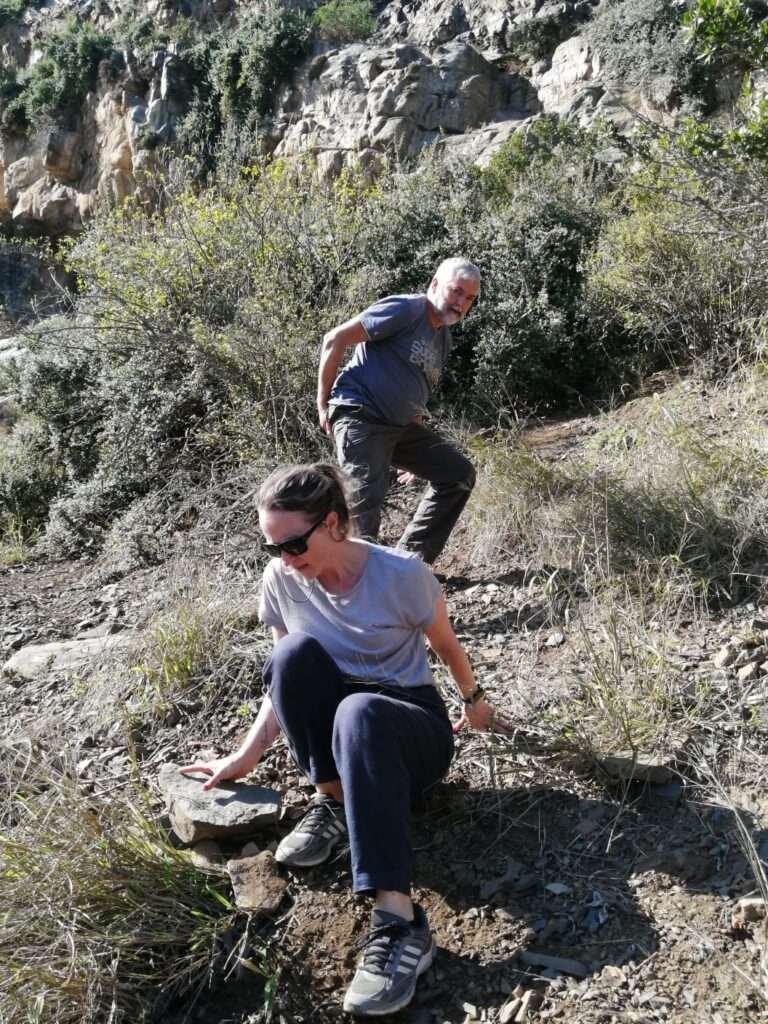
Despite the challenge of the climb, our efforts were rewarded at the top. Along the wall of the cave, a single ancient painting stood out prominently, surrounded by subtle markings. This remarkable rock art served as a moving reminder of the presence of the San People, also known as Bushmen, who once inhabited this very land. Exploring the areas where they pursued their hunts, performed daily rituals, sought shelter, and found rest invoked a profound sense of admiration. We couldn’t help but marvel at their resourcefulness, particularly contemplating how they managed to hoist a triumphant hunt up the steep slopes.
Beyond the rock painting, the vantage point from the cliff offered a beautiful sight. From our elevated position, we looked down upon the rocky river bed we had crossed earlier. Little did our companions who remained by the river know that two hippos were leisurely wallowing in the water, observing them from a safe distance.
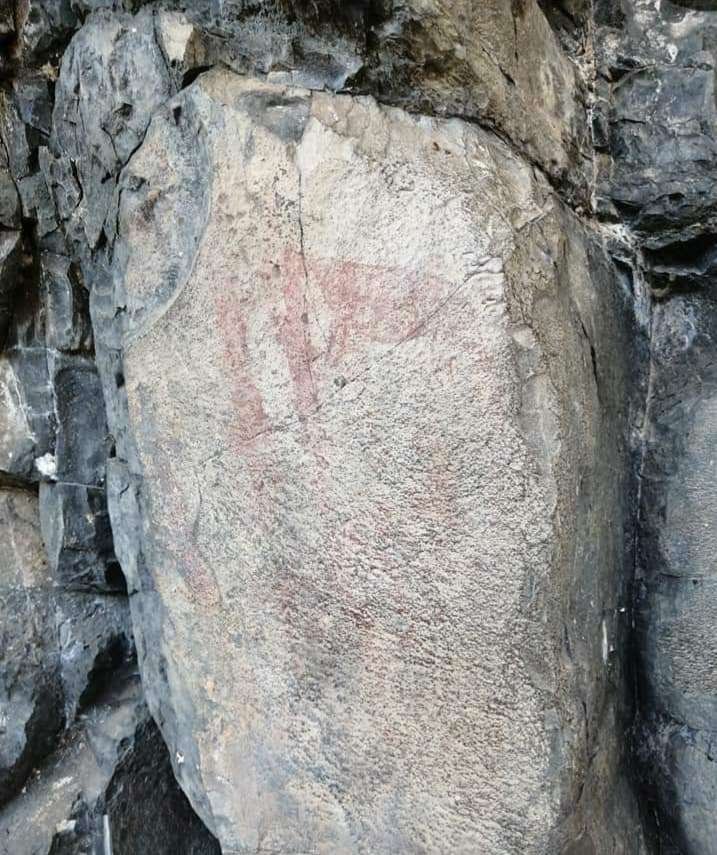
Descending the rock face was challenging. We had to maneuver carefully, going down on all fours to avoid rolling down the hill. It was uncomfortable but worth it to appreciate the significance of San rock paintings. These ancient artworks hold immense cultural and historical value, deserving our utmost appreciation and admiration.
Heading back to Mvubu Lodge
We trekked another 4 km, following the river and navigating dense thickets. The sight of the land cruiser on the horizon brought us immense relief. We were grateful for the comfortable ride back to Mvubu Lodge after our long trek. On the return journey, we enjoyed a game drive and explored the historic fort of Double Drift, adding to our overall experience. We had the pleasure of spotting an ostrich, numerous kudu, and a handful of baboons during the game drive.
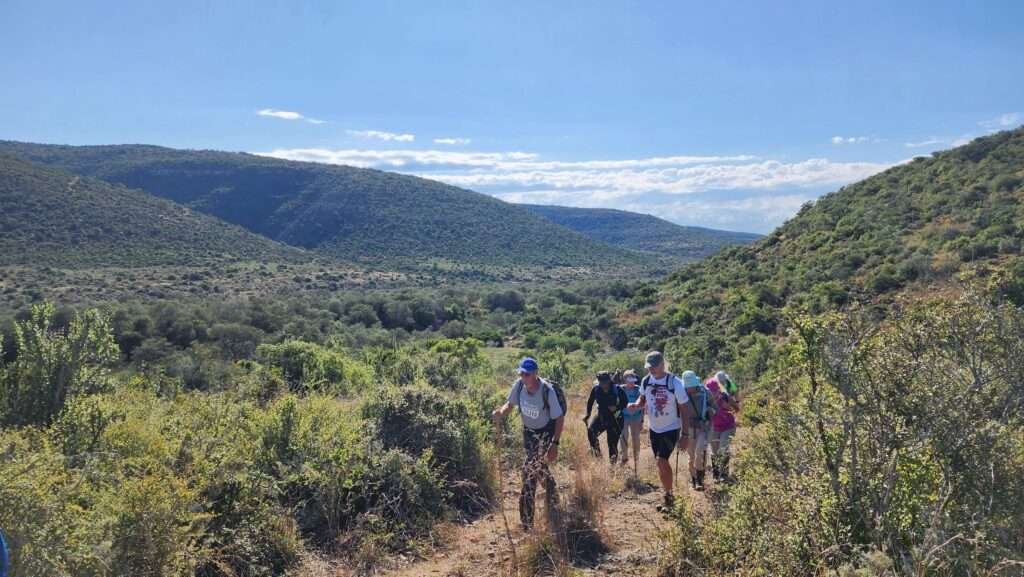
The Double Drift Fort
From 1779 to 1889, South Africa, including the Double Drift area, was subject to invasions by Dutch and British colonizers. The fort’s design typically consisted of earthen walls or stone structures that provided protection and vantage points for fighters. These forts were often temporary in nature, built and abandoned as the conflict dictated. Today, the remnants of the Double Drift Fort serve as a historical landmark, offering visitors a glimpse into the region’s tumultuous past. Exploring the fort serves as a solemn reminder of the challenges faced by the Xhosa people.

Lunch at Mvubu Lodge
By 1:30pm, we returned to Mvubu Lodge, finding our way to the inviting lounge/restaurant area. A delectable feast awaited us, skillfully prepared by the staff. The centerpiece of the meal was a succulent warthog spit braai, accompanied by mouthwatering offerings such as chicken, beef sausage, fresh salads, roosterkoek (grilled bread), coleslaw, and the quintessential pap and chakalaka. Chakalaka, a traditional African vegetable stew bursting with flavors of tomatoes, peppers, carrots, and onions, perfectly complemented the cornmeal-based pap, creating a harmonious culinary experience.
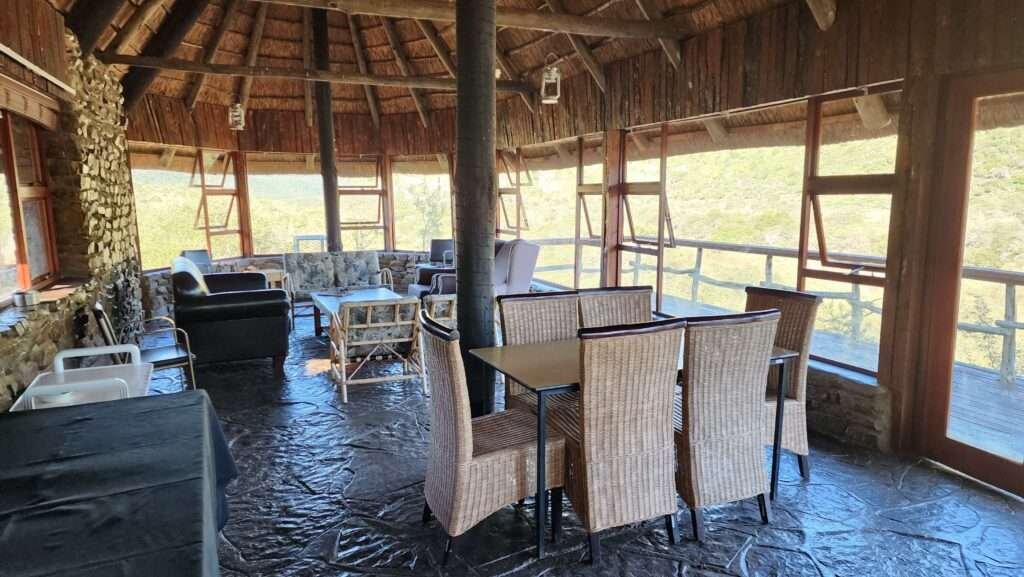
A spectactular viewpoint: Adam Krantz
Sadly, our time at Double Drift was coming to an end. We boarded the open game vehicle for our return journey to the main office area and parking lot. Fortunately, we had one more stop to make along the way: the Adams Krantz Viewpoint. Interestingly, the origin of the name remains a mystery, as nobody knows the identity of the presumed Adam after whom the viewpoint was named. The view from the Adams Krantz Viewpoint is truly spectacular, with a panoramic vista of the gorge and the horseshoe river bend flowing 100 meters below the viewing deck.

To sum up, our experience at Double Drift was absolutely spectacular. Both the commitment and enthusiasm of the staff made our visit unforgettable. If you seek a quiet and scenic destination to reconnect with nature, there is no better place to be. With a range of activities and excellent accommodation options, Double Drift offers a relaxing getaway for visitors. Embracing simplicity allows you to appreciate the beauty of nature, from the layered colors of a sunset to the soothing sounds of the natural world.

Important Travel Information for Double Drift Nature Reserve
Where to stay
There are a total of six separate lodging facilities within the vast Great Fish River Reserve. The good news is that all of these accommodations are open and available for guests at Double Drift.
Our hike started at the impressive Mvubu Lodge, featuring rustic yet enchanting stone cottages. Furthermore, the lodge boasts a communal lounge with a deck, offering a picturesque vantage point overlooking the Great Fish River.
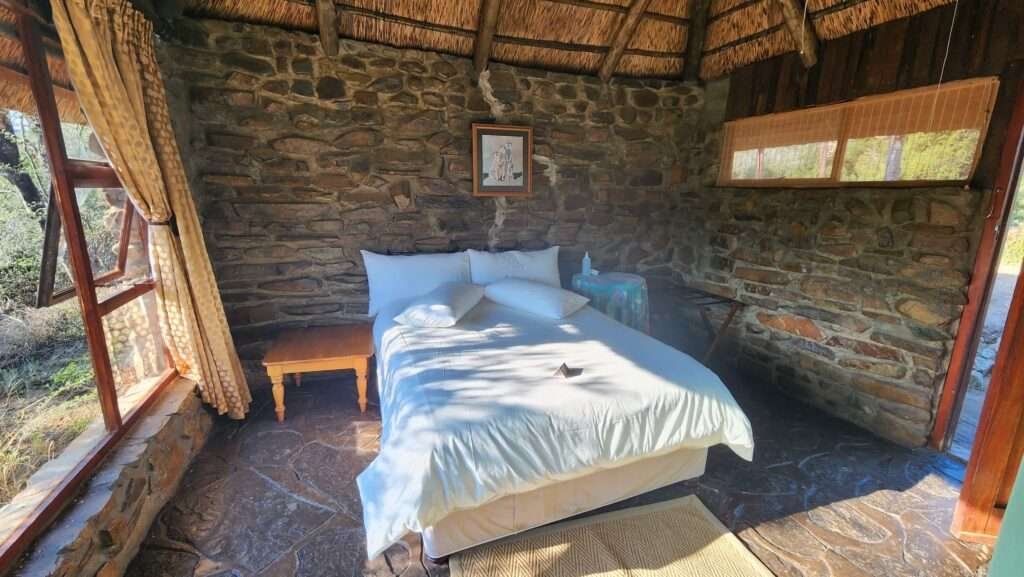
On the other hand, the Mvubu chalets set on a ridge above the river. These chalets were designed with comfort and convenience in mind, having a balcony complete with a braai area. In addition, a shared swimming pool offers a place to cool-off and and unwind. Mvubu Lodge offers a perfect setting to watch the sunset and maybe spot some animals grazing by the river.
To find out more about the other accommodations available at Double Drift, click here.
Contact Information
You can contact Double Drift via email at thea@ecotourism.org.za or ectbdd@icon.co.za. Alternatively, you can reach out to them by phone at +27(0)40 653 8010.
Location
To locate Double Drift Reserve, you can access Google Maps for precise directions by clicking on the following link: Google Map Directions.
If you liked this post, simply click on the image below to explore more incredible destinations to visit in the Eastern Cape.
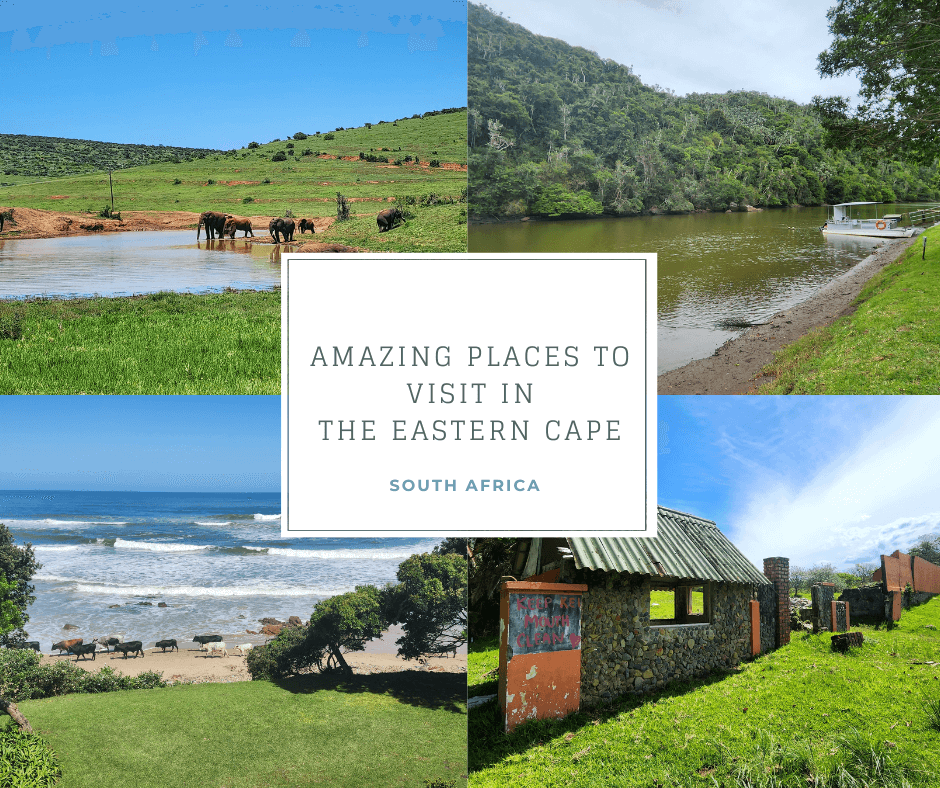


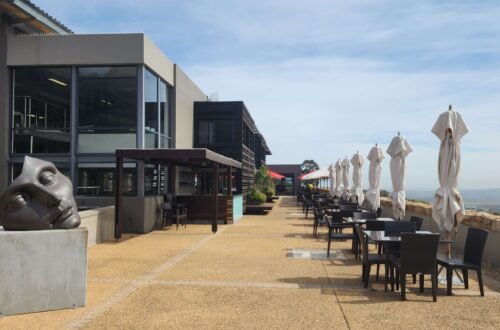
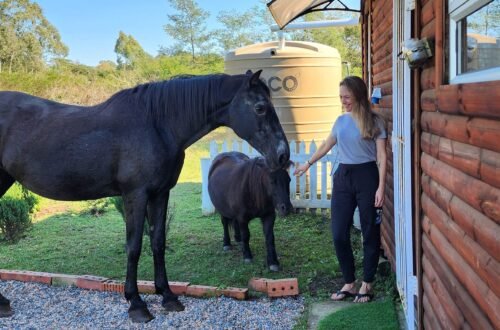
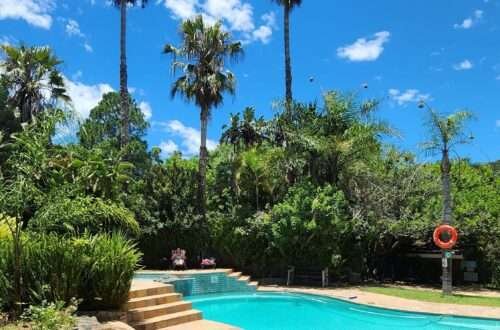
2 Comments
Lesley Jones
Beautifully written and illustrated. Well done Sam.
Yes, i plan to visit the reserve as soon as possible.
Samantha
Thank you for the positive message Lesley x